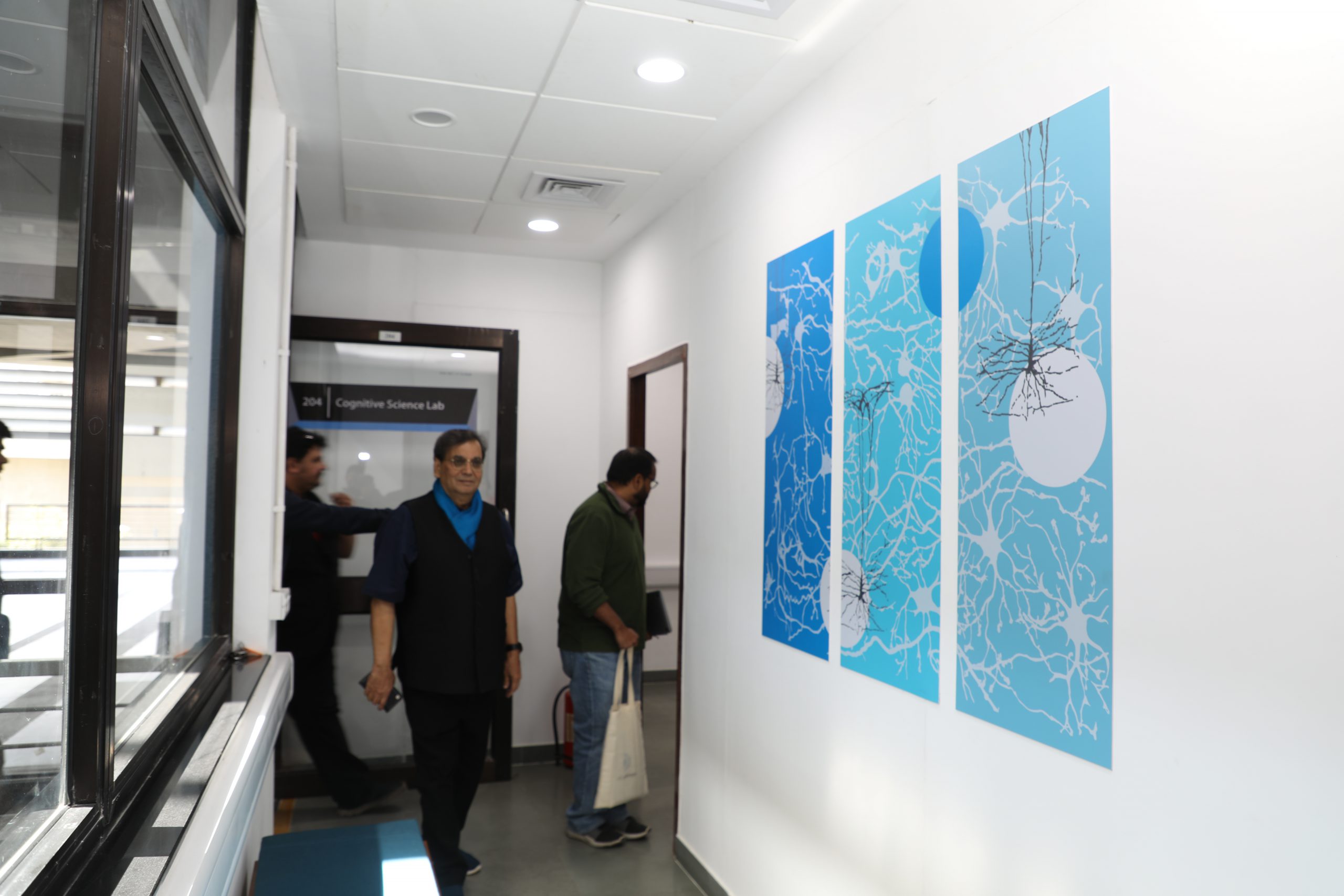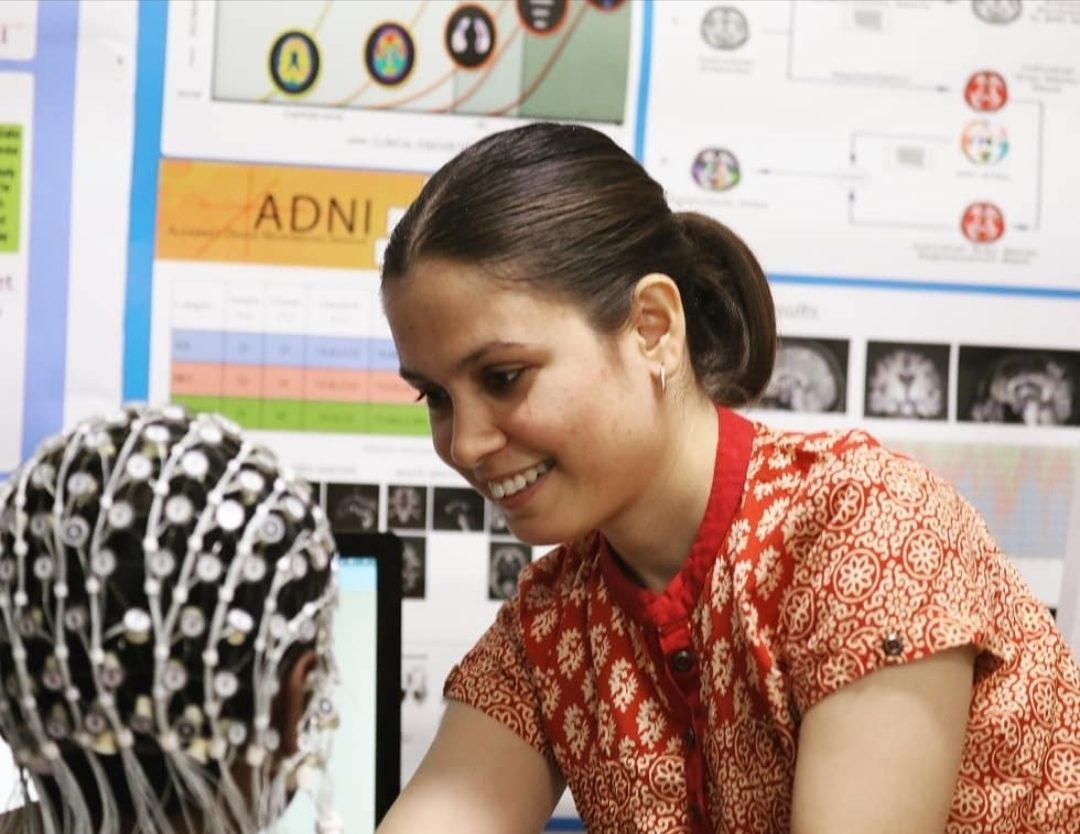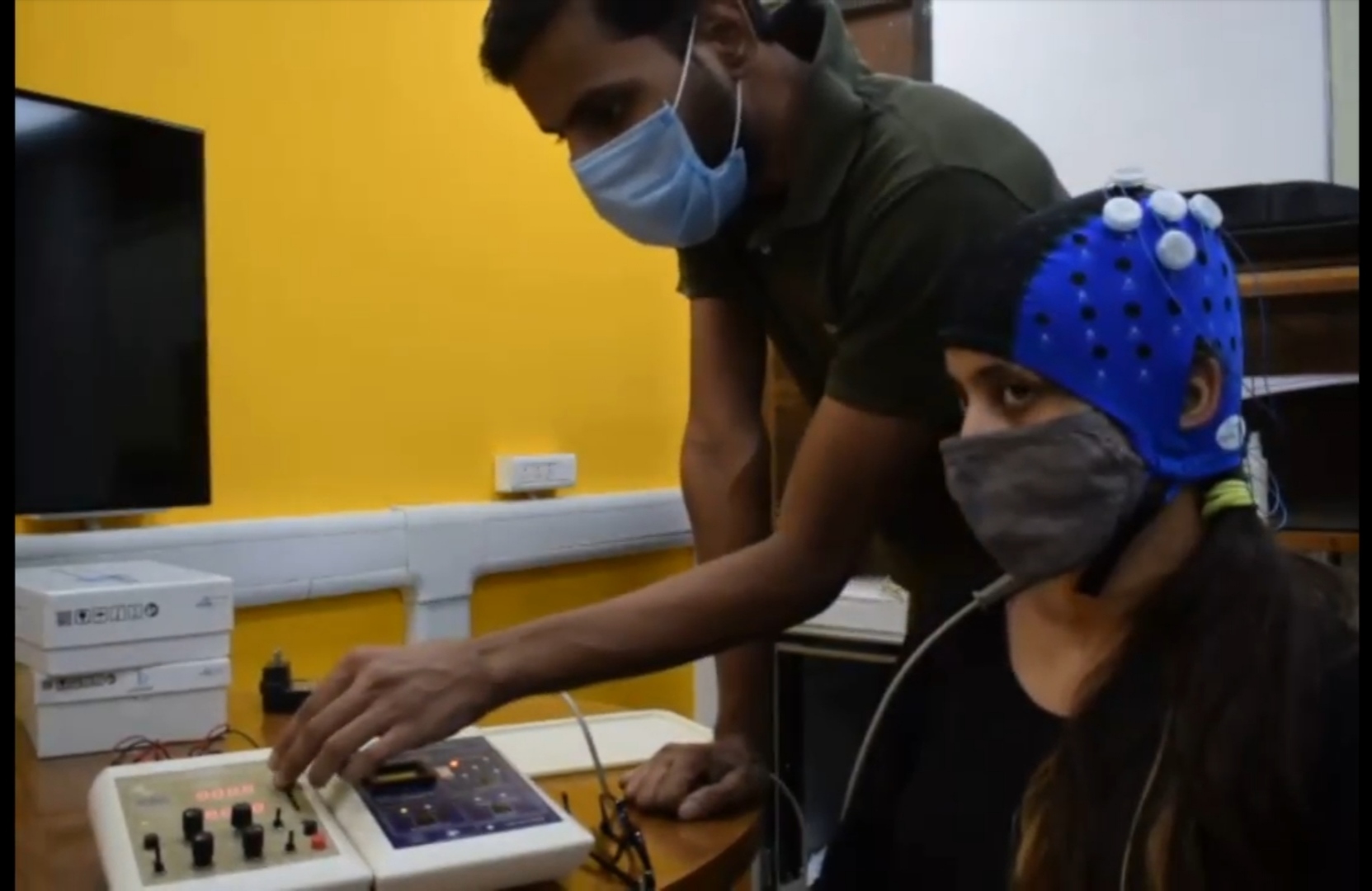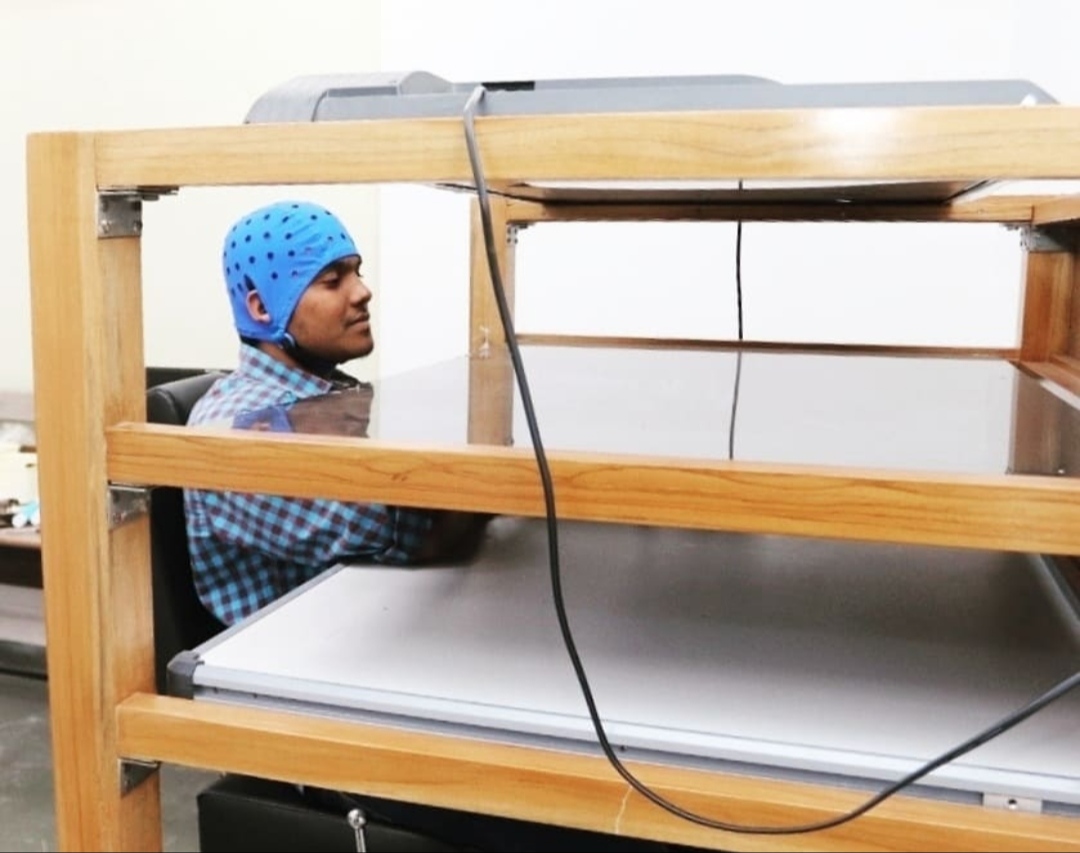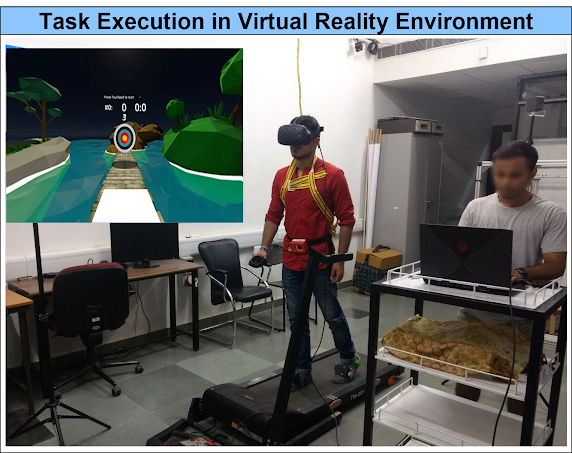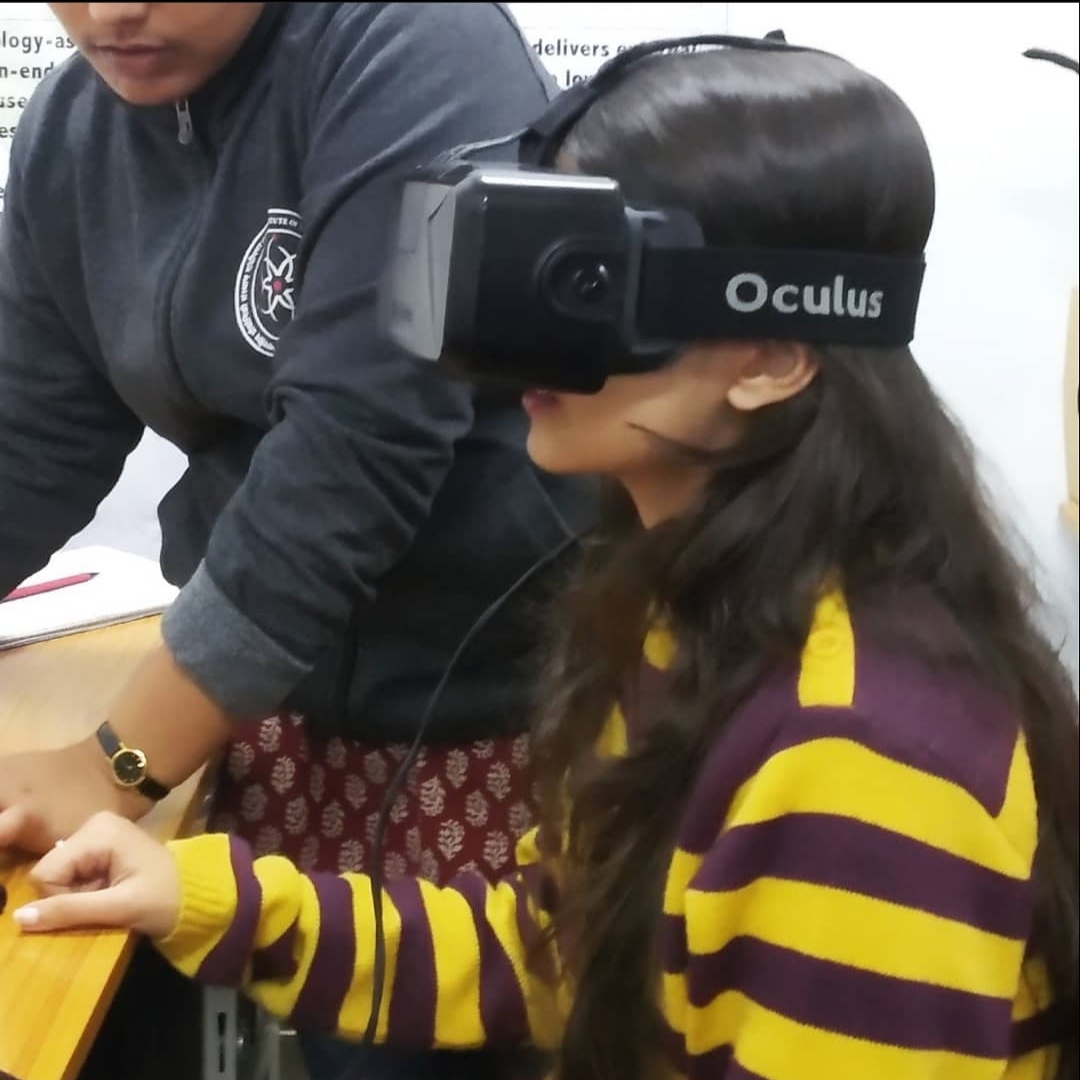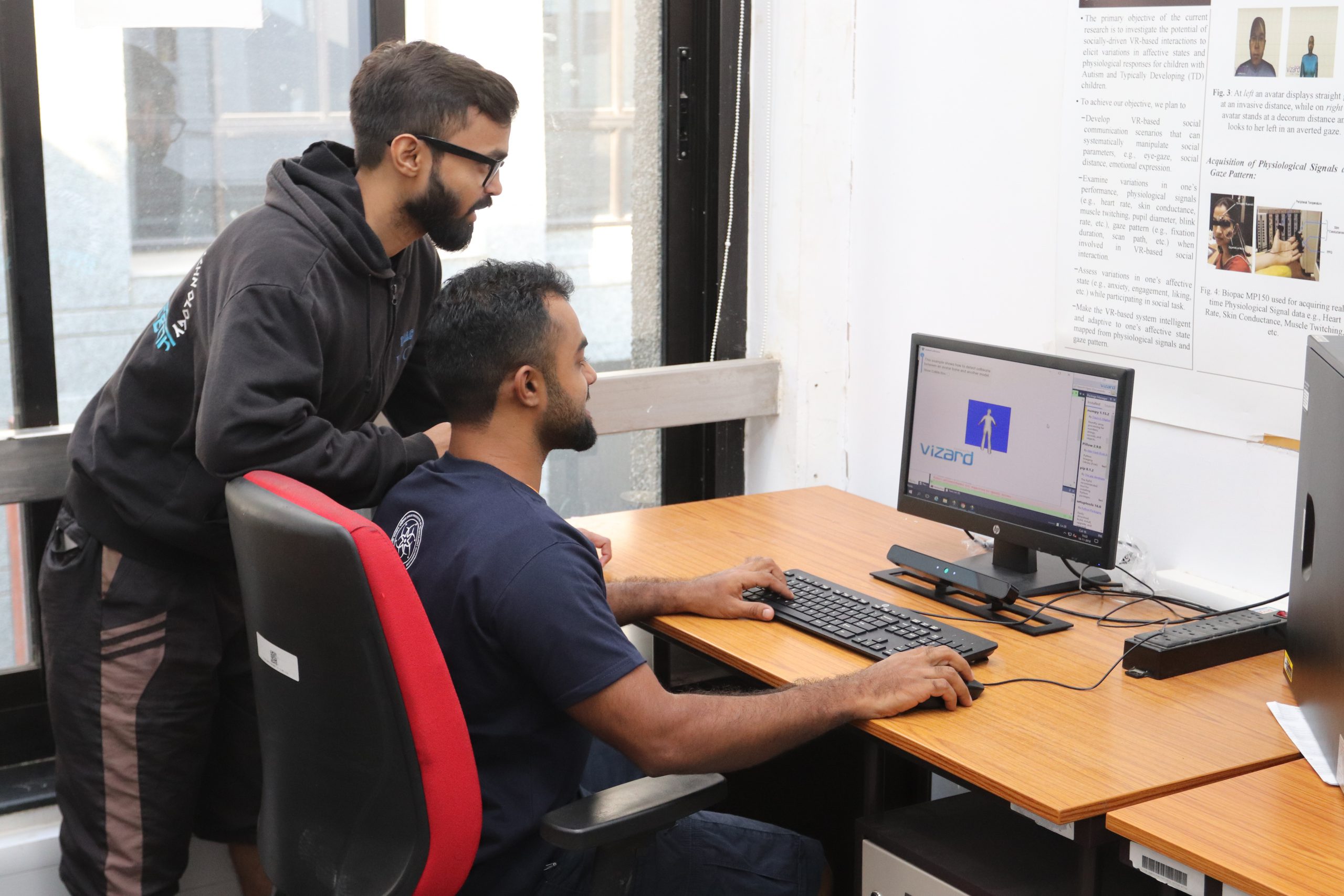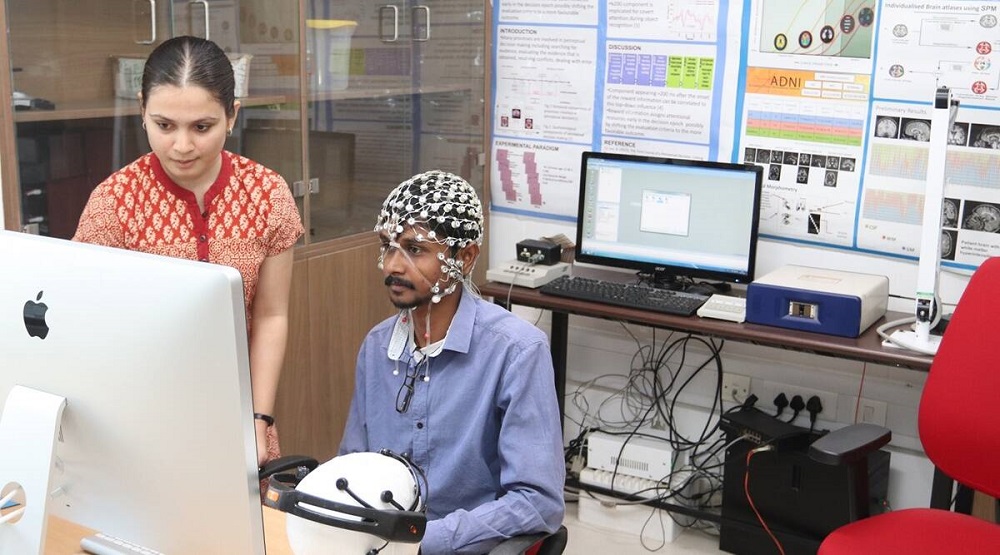MULTISENSORY LAB: The Lab features research facilities for sound-attenuated testing of Active noise cancellation equipment with surround sound speakers. The lab features a driving simulator that was built completely in-house.
TACTILE PERCEPTION LAB: The Lab features custom-built arduino-based devices supplemented by 3D printing for conducting psychophysics experiments for texture discrimination, wetness perception, tactile stimulation with peizo electric vibrators.
PSYCHOPHYSIOLOGY LAB: The wireless physiology-based data acquisition system (Biopac Systems Inc) facilitates real-time data acquisition of physiological signals such as ECG, EMG, EDA and provides excellent signal quality with digital transmission with high resolution of 16 bit and at high speed up to 400 kHz aggregate. The system is compatible with the virtual reality-based programming platform Vizard from WorldViz Inc.

